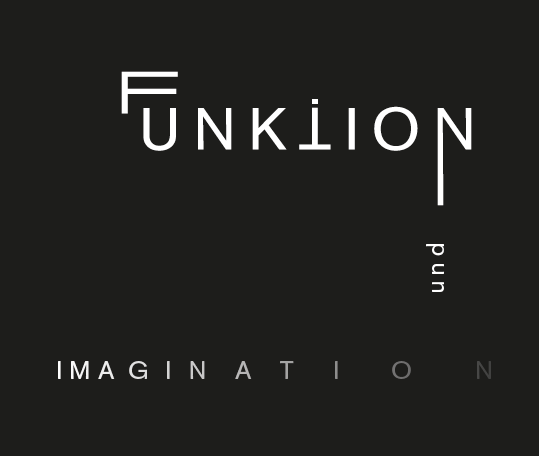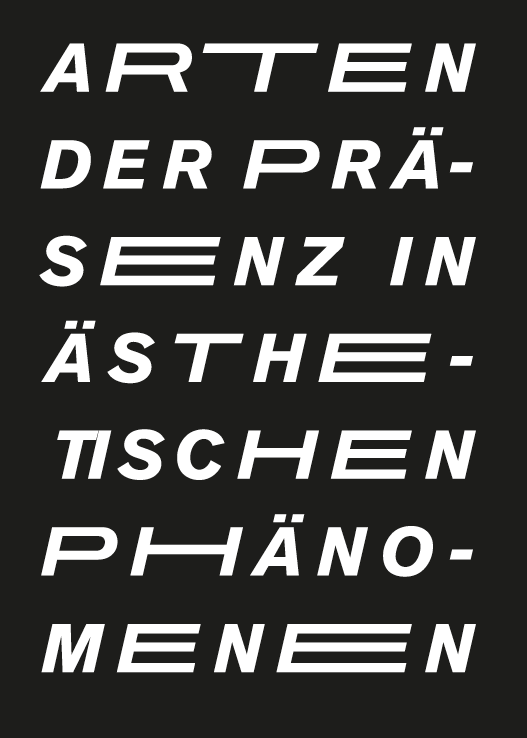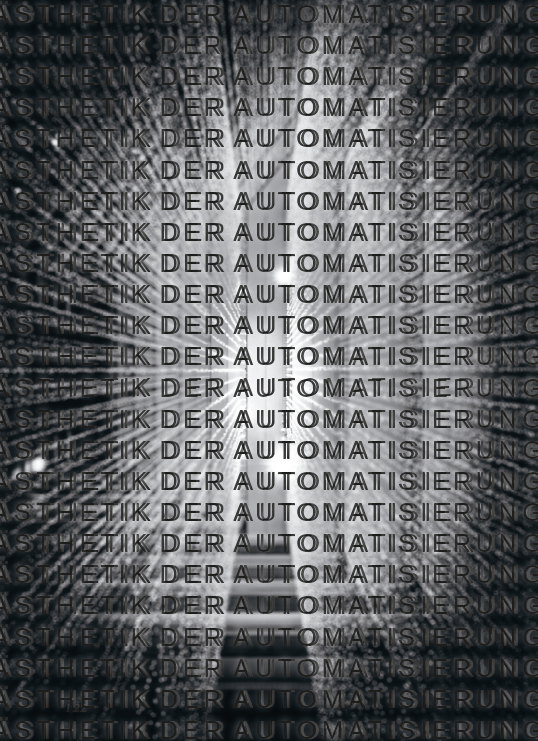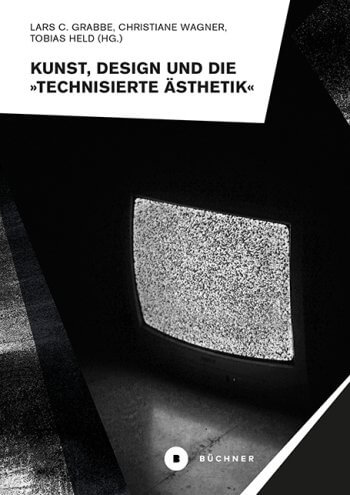In art and design, production is increasingly taking place in the context of all-encompassing mechanisation. Anyone who works creatively finds themselves referred to apparatuses, interfaces and programmes. Technical, especially digital tools can inspire, but also set limits to the creative process. The anthology “Art, Design and the “Technicised Aesthetic”” takes up various facets of the topic.
Review by Thomas Wagner.
Art, design and mechanised aesthetics? That sounds tempting and threatening at the same time. Is our perception and our sense of taste possibly more influenced by networking, hyperlocality, hybridisation, cyborgisation and multimedia than we realise? “Technicised aesthetics” promises upheaval, a turning point, even revolution – and should therefore interest designers of all stripes. Does digital technology today create an aesthetic according to its own specifications with every application and every use of the screen? Will it only triumph in the haunted castle of a soon to be omnipresent AI – or have its effects long been real?

The decisive factor is a basically simple observation: every aesthetic experience (i.e. every sensual, preferably optical perception, but also the repertoire of formal design possibilities) is, as the introduction to the volume of essays “Art, Design and the ‘Technicised Aesthetic'” states, “massively anchored in public culture through media-ecological interdependencies and a constantly evolving digitalisation and mechanisation”. This means that almost every aesthetic experience we have is now mediated by technology or media. Technicised design and aesthetics take place network-like, hyperlocal, hybrid and mediated via designed interfaces as well as hardware and software. From this it is clear that it is advisable to think about how and with what consequences artificial and physical reality condition, overlap and influence each other – or whether one even dominates the other. In other words, this is where it is decided who ultimately calls the shots in the house of creativity.
Many Topics, Different Perspectives
The perspectives presented in the anthology are as diverse as they are academic in language and style. This does not always make for easy reading. Often, the supposed state of research is presented first, so that the historical thread that has been established can then be spun discursively further. The fact that the complex relationship between aesthetics and technology involves different disciplines is also shown by the range of topics: These range from “immersion fantasies” to “types of presence”, the “relevance of technical development in debates about design in the 1920s” and image cultures of world design to the influence of interface design on a post-digital aesthetic, to glitch art, AI and co-creativity. At the end, there is even speculation about whether there might be a “quantum aesthetic” and what it might look like – although art is reduced in a rather woodcut-like manner to the illustration of theories that largely elude visualisation.
As is to be expected with such a wide range of topics, much remains implied, some disparate. (Some of the contributions would have benefited from peer review as well as editing, which could have cleared up the linguistic fog). The introduction offers a synopsis of the individual contributions, after outlining thematic definitions and boundaries, which is helpful in identifying one’s own areas of interest. In general, the volume endeavours to make the wide range of topics more accessible by providing summaries.


Is it the Technology that Makes You Creative?
As far as the scope and limits of the field of a “technicised aesthetics” that is to be surveyed are concerned, the introduction states: “Creative production – primarily in recent decades – takes place in the context of an all-encompassing ‘technicisation’ that articulates and integrates both analogue and digital aspects, which in turn seem to form the basic condition for quantum-based developments. If this is the case, “the creative” thus “also shows itself par excellence in the creative unpredictability of the new apparatuses and in the context of a machine aesthetic already manifoldly anchored in everyday culture.” To put it bluntly: artists and designers are not creative, they only become so through the input that advanced technology provides them. So is it digital programmes, production techniques and processes, man-machine interfaces and apparatuses that promote a new dynamic in art and design?
Tracking Down a Changed Logic of the Aesthetic
The contributions, as has already been mentioned, are too diverse, the topics too varied, to be able to deal with individual theses and arguments here. The attempts to trace the “logic of the aesthetic”, which has been changed by technology, do not always come to satisfactory results. (Cultural studies analyses that could have broadened the horizon are left out, as are precise definitions of terms. As far as the 1920s are concerned, Helmut Lethen’s account of “Cool Conduct” in the interwar period, for example, could have helped to clarify the relationship between technical and neo-scientific perspectives. In the discussion of a “digital aesthetics”, to cite another example, it would have made sense to examine its metaphorics in more detail).

First Glance at Far-Reaching Consequences
For all the criticism that can be levelled at individual approaches, and no matter how much the concept of the aesthetic may alternate between a doctrine of beauty and taste, a theory of perception and formal design options, one thing becomes very clear when looking at the whole: if it is true that perception and production are increasingly mediated via technical devices, then this has far-reaching consequences for art and design, especially where they proceed in a practice-based and practice-oriented manner. The technical obviously not only sets the imagination in motion, it also sets limits to the creative process. Thinking about the way in which the limits of my creativity coincide with the limits of the apparatuses and programmes seems absolutely necessary. This is where the volume ventures its first steps. It is only surprising at first glance that reference is made to Walter Benjamin and his essay on “The Work of Art in the Age of its Technical Reproducibility” (as in Kate Crawford’s critical perspective on the latest developments in AI). Whereas it is currently less about “technical reproducibility” than about technical inducibility or even (keyword AI) about complete technical producibility.

Kunst, Design und die „Technisierte Ästhetik“
Lars C. Grabbe, Tobias Held, Christiane Wagner (Hg.)
272 p., paperback
Büchner-Verlag, Marburg,2023
ISBN 978-3-96317-327-1 (Print)
30,00 Euro
ISBN 978-3-96317-884-9
24,00 Euro (ePDF)
More on ndion
More reviews.
Share this page on social media:

